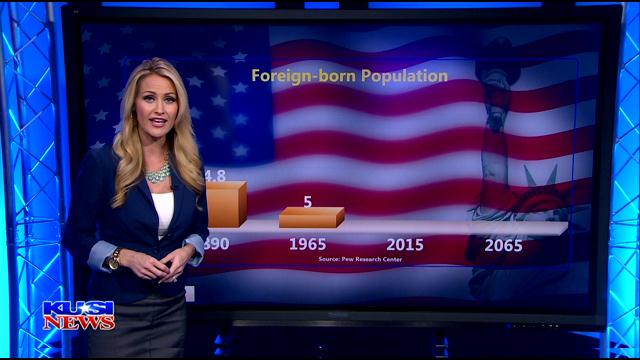-
Tips for becoming a good boxer - November 6, 2020
-
7 expert tips for making your hens night a memorable one - November 6, 2020
-
5 reasons to host your Christmas party on a cruise boat - November 6, 2020
-
What to do when you’re charged with a crime - November 6, 2020
-
Should you get one or multiple dogs? Here’s all you need to know - November 3, 2020
-
A Guide: How to Build Your Very Own Magic Mirror - February 14, 2019
-
Our Top Inspirational Baseball Stars - November 24, 2018
-
Five Tech Tools That Will Help You Turn Your Blog into a Business - November 24, 2018
-
How to Indulge on Vacation without Expanding Your Waist - November 9, 2018
-
5 Strategies for Businesses to Appeal to Today’s Increasingly Mobile-Crazed Customers - November 9, 2018
Asians are the only group growing in the USA because of immigration
Immigration patterns in the USA will begin to see a shift within the next 50 years.
Advertisement
Non-Hispanic whites are projected to become less than half of the USA population by 2055, and no racial or ethnic group will be a majority, according to Pew.
Asians will be the largest immigration population by 2065, according to a report on the immigration change by Pew Research Center. During that time, the US population has increased from 193 million to 324 million, with immigrants and their descendants accounting for 72 million, or 55 percent, of this growth.
Today, the Pew Research Center released new analysis that shows that by 2055, Asians will pass Latinos as the largest immigrant group in the country. The vast majority of people who immigrated to the USA before 1965 were European, but 51% of those who came after have been Latin American; about a quarter have come from Asia.
The attitudes toward immigrants from Latin America and the Middle East were similar, the survey found, within a few percentage points – almost 40 percent said the effect of those immigrants was negative. Sixteen percent said they are not having much effect. The foreign-born population in the United States of America now stands at 45 million.
The national projections presented here use a variant of the basic cohort component model in which the initial population is carried forward into the future by adding new births, subtracting deaths, adding people moving into the country (immigrants), and subtracting people moving out (emigrants).
Already, Asian Americans make up about 6 percent of the nation’s population.
Pew found that Americans now have a more positive view of Asian immigrants when compared to Latino immigrants.
Last Sunday, US secretary John Kerry announced 85,000 refugees would be accepted into the nation next year.
Currently, 47 per cent of immigrants living in the United States are Hispanic, but by 2065 that number will have dropped to 31 per cent. This is why the US has the largest foreign-born population to date and the numbers may further increase. On the other hand, Pew notes, the number of undocumented foreign-born residents-i.e. the ones who are most often targeted by politicians-has in recent years fallen even in absolute terms since peaking, pre-recession, in 2007.
Advertisement
Before the 1965 law’s inception, Ireland, Germany and the United Kingdom were entitled to 70 per cent of U.S. visas and weren’t using their full share. Some 45% of adults say immigrants in the US are making American society better in the long run, while 37% say they are making it worse. Forty-nine percent offered general descriptions, and of those 12 percent were positive, 11 percent negative and 26 percent neutral, according to the report. That figure went up to 6 percent in 2015 and expected to be 14 percent by 2065.





























